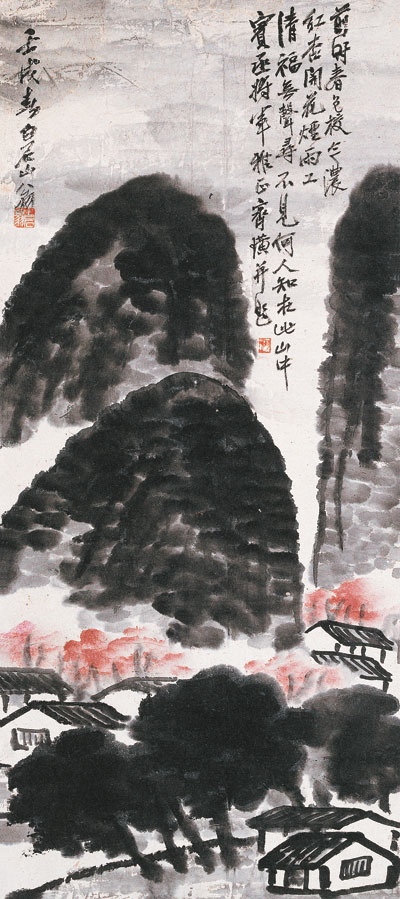
Debra Li
debra_lidan@163.com
CHINESE painting fans will have the rare opportunity to appreciate authentic paintings by master painter Qi Baishi this week and next at the Artron Art Gallery in Futian.
To mark the 150th anniversary of Qi’s birth, Artron and Beijing Cultural Relics Company have brought 93 pieces of his work to town, the majority of which are on public display for the first time.
The exhibits are estimated to be worth around 700 million yuan (US$113m), said Artron spokesperson Yang Xu.
Born to a peasant family in Xiangtan, Hunan Province, Qi became a carpenter at age 14 and taught himself painting in his spare time. After being a carpenter for 10 years, he began taking regular painting lessons from folk artist Xiao Xianggai, and a year later, he took literature lessons from two scholars.
At 25, he was able to support himself and his family by painting portraits for clients. After turning 40, he began traveling, visiting various scenic spots around China. After 1919, he settled in Beijing and was noted for the whimsical, often playful style of his watercolor works.
Some of Qi’s major influences included the early Qing Dynasty (1644-1911) painter Bada Shanren, also known as Zhu Da, and the Ming Dynasty (1368-1644) artist Xu Wei. Qi was an expert at presenting the mundane side of everyday life in his paintings. The subjects of his paintings included almost everything. He theorized, “paintings must be something between likeness and unlikeness.” Qi largely reinvented Chinese painting traditions and had a huge influence on artists that came after him.
The 93 pieces on show at Artron include a wide range of subjects, including scenery, figures, aquatic animals, vegetables, birds and flowers. The works, categorized in three parts, were created in different periods of his life (between 1911 and 1957, when he passed away), representing the full spectrum of his styles.
The exhibition provides clear clues as to how Qi transformed from a skillful craftsperson into an art master, starting from imitating other masters, making minor innovations and finally establishing his own distinctive style.
Among the exhibits, the earliest piece of work “Chrysanthemums and Birds on a Stone” (1911) was apparently an imitation of Bada Shanren.
The most precious piece is an elaborate-style painting “Shell-shaped Leaves and Insects” (1942), bought for 16.8 million yuan in 2009. It features a dragonfly, a cricket, a cicada and a mantis, all resting on or near ocher brown and greyish blue leaves. The veins of the leaves and the patterns on the almost transparent wings of the insects are so finely painted that viewers marvel at Qi’s virtuoso with paintbrushes.
“Qi started with an elaborate painting style, but gradually turned to a more free-stroke style,” Yang explained.
After becoming friends with other influential artists such as Lin Fengmian and Huang Binhong, Qi was courageous enough to further reform his painting styles in his 60s and 70s.
The works he created late in his life, such as the yellow gourds and red peaches Qi painted in the 1950s, combine bolder colors with shades of ink on top of a free-flowing style.
Many of the exhibits, featuring chickens, cabbages, mushrooms and childish toys like the tilting doll, are evidence of Qi’s nostalgia for rural life while he lived in Beijing.
As a subvenue of the 10th China (Shenzhen) International Cultural Industries Fair, the Artron Art Gallery will also host an exhibition of Japanese antique silver teapots, a show of flower and bird paintings by Zhang Jixin, lectures and a porcelain verification event (May 17).
Time: Until May 25
Venue: Artron Art Gallery, 5 Meidong Road 2, Futian District
Buses: 44, 45, 60, 67,102, 207, 216, 218, 222, 324, 328, 388, B821, M312, N12
Free admission
|

